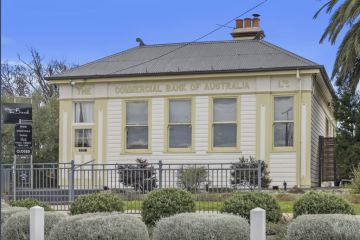Are you financially ready to buy?

There are straightforward steps you can take to assess your financial health and potential borrowing power. This includes reviewing your:
- Savings history
- Current savings
- Current debt
- Outgoing living costs compared to income
- Likely changes to living costs or future income
- Loan options
- Target suburbs and related median prices.
Whether you are seeking financial advice from a financial advisor, lender or accountant, or going it alone, the better the understanding you have of your personal finances, the better the decisions you will make. You never want to put your financial security blindly in the hands of another, no matter what their credentials. Conversely, the more information you can provide a potential lender or advisor, the better they can help you to find the most suitable loan.
If you are looking for a mortgage lender, financial advisor or mortgage broker, always shop around. It is only by seeing what is in the market that you can assess if the service or loan on offer is a good deal. Always use a licensed advisor. The Australian Securities and Investments Commission’s MoneySmart website provides excellent guidelines to obtaining the right advice.
Learn from the mortgage market
Once you have saved an adequate deposit and know the price range of homes in the area where you want to buy, it is time to investigate the mortgage market.
There are excellent online calculators to help you assess loan products, interest rate changes, stamp duty costs (these vary considerably between states and territories and can be sizeable) and your financial ability to make home loan repayments.
By delving into the products on the market, talking to lenders about their mortgage facilities (including offset accounts, repayment holidays and redraw facilities) and factoring in potential interest rate changes, you can determine a realistic home-buying budget and ongoing repayment plan.
In an ideal world you will obtain loan pre-approval. This can be basic, conditional or unconditional.
Be realistic about what you can afford
Once you have done your market research and determined your borrowing power, or even obtained loan pre-approval, you need to check there is a sufficient buffer in your budget to tackle unexpected buying costs and future lifestyle or interest rate changes.
A common rule of thumb is not to spend more than 30 per cent of your household’s gross income on mortgage repayments, or rental payments for that matter. If you exceed 30 per cent, you leave yourself open to mortgage stress. According to the 2011 Census, it is not uncommon for Australian households to exceed this threshold, and banks have been known to lend to buyers who will be spending up to 60 per cent of household pretax income on repayments.
Even if your lender is prepared to lend you more money, think very carefully about breaking the 30 per cent rule. The less you spend on loan repayments from your household’s gross income, the more secure your financial position.
When it comes to the deposit, you should aim to save a minimum of 20 per cent of the home’s sale price. Anything under 20 per cent will most likely require lender’s mortgage insurance. As property prices rise, this practice is becoming more common.
Domain Group senior economist, Dr Andrew Wilson, strongly encourages property buyers to protect their existing equity. “Don’t be tempted to use a large part of your equity for new purposes,†says Wilson. “The 20 per cent: 80 per cent model that banks use is something you should also use as a minimum in terms of maintaining equity levels. The more equity you keep in your property, the more secure it is.â€
Naturally, your personal circumstances will impact your borrowing ability, including whether you are buying alone or with a partner, your credit rating status or if you have previously filed for bankruptcy.
Know your property costs
You can improve the accuracy of your home-buying budget by thoroughly accounting for the upfront and ongoing costs of buying real estate.
Upfront costs include:
- Building inspections
- Legal fees such as contract advice and title searches
- Financial advisor fees
- Mortgage establishment fees
- Deposit
- Stamp duty
- Lender’s mortgage insurance
Ongoing homeowner costs include:
- Mortgage repayments
- Council rates
- Strata fees
- Utilities
- Maintenance and repairs
- Home and contents insurance
If you are at all concerned about the financial validity of a contract of sale, make sure you negotiate a conditional settlement with a cooling-off period so you can comfortably back out of the sale.
Continue reading the Complete Home Buyers’ Guide with:Â Make your property inspections count
We recommend
States
Capital Cities
Capital Cities - Rentals
Popular Areas
Allhomes
More







